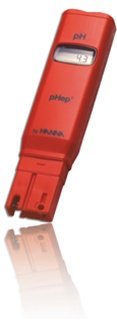barhoc11
Well-Known Member
I finally decided to start actually monitoring my pH in my mash with my latest batch of Centennial Blonde. I have always just assumed that the EZ Water spreadsheet was correct and I would add the appropriate amounts of acid to get me in the 5.4 - 5.6 pH range. This has given me good results in the past but as most of you know, we always want to see if we can improve a little more if possible so I wanted to just make sure my pH ranges were correct.
After buying a pack of the brewing pH strips from my LHBS, I did a reading on my tap water and it seemed to be at 6 pH or higher (only able to test up to 6). I figured this was a good sign and that I could trust these strips a little for my upcoming brew day.
Brew Day:
Based on EZ Water I was planning to add 3ml of Lactic Acid to get my pH down from 5.64 to 5.47 (room temp) BUT after adding my brewing salts (which should have little impact on pH) to my mash, I tested and the strips seem to show that my pH was actually around 5 or even a tad lower so I didn't add any of the Lactic Acid. I was still debating adding some acid because this just didn't jive with the EZ Water spreadsheet I had setup but I held off thinking I could trust the pH strips.
My efficiency was great and things went as normal but I am looking to see if anyone can provide me some feedback on how accurate the EZ water spreadsheet is and if I should even bother with trying to test my pH. I would rather not buy a pH meter and have to hassle with the buffering and stuff that goes along with it. I just feel like the EZ Water and Brun Water spreadsheets are pretty solid and if you can provide a good profile of your water report, they should get you very close based on all of your inputs but maybe I am being naive.
Any thoughts?
After buying a pack of the brewing pH strips from my LHBS, I did a reading on my tap water and it seemed to be at 6 pH or higher (only able to test up to 6). I figured this was a good sign and that I could trust these strips a little for my upcoming brew day.
Brew Day:
Based on EZ Water I was planning to add 3ml of Lactic Acid to get my pH down from 5.64 to 5.47 (room temp) BUT after adding my brewing salts (which should have little impact on pH) to my mash, I tested and the strips seem to show that my pH was actually around 5 or even a tad lower so I didn't add any of the Lactic Acid. I was still debating adding some acid because this just didn't jive with the EZ Water spreadsheet I had setup but I held off thinking I could trust the pH strips.
My efficiency was great and things went as normal but I am looking to see if anyone can provide me some feedback on how accurate the EZ water spreadsheet is and if I should even bother with trying to test my pH. I would rather not buy a pH meter and have to hassle with the buffering and stuff that goes along with it. I just feel like the EZ Water and Brun Water spreadsheets are pretty solid and if you can provide a good profile of your water report, they should get you very close based on all of your inputs but maybe I am being naive.
Any thoughts?



